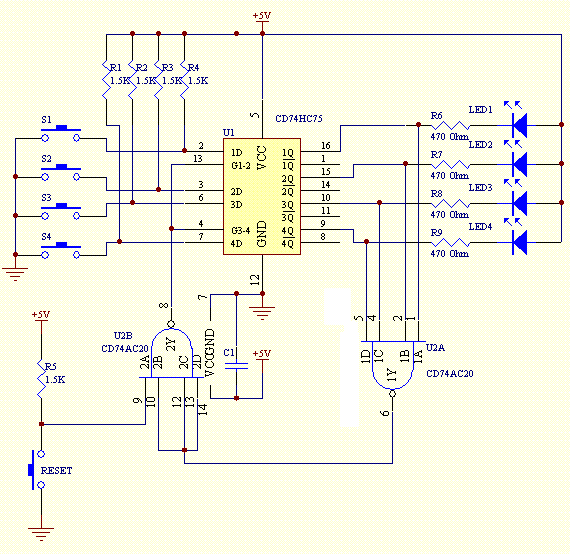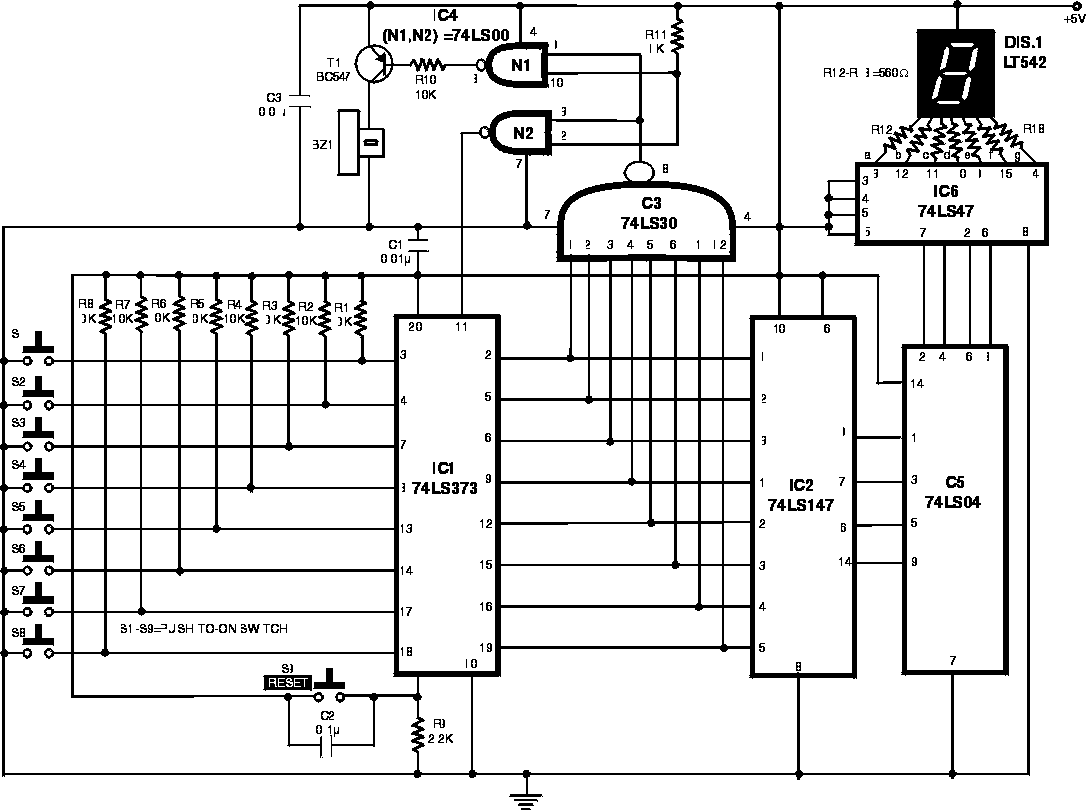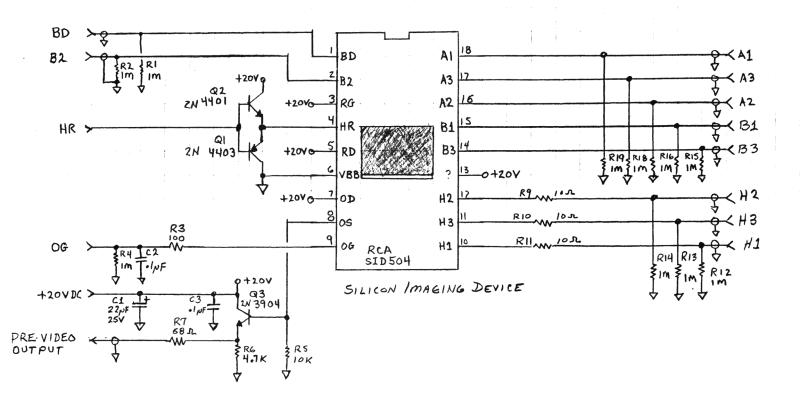
Who Press First Educational Game

This electronics educational game utilizes a NAND integrated circuit (IC), a latch IC, and several peripheral components to create a project that can identify which of the four individuals presses the button first.
The project is designed to engage users in a hands-on learning experience about digital electronics. It incorporates a NAND gate, which is a fundamental building block in digital logic design, to perform the necessary logical operations. The latch IC is employed to store the state of the button presses, ensuring that the project can accurately determine which participant was the quickest to respond.
The circuit typically includes four push-button switches, each representing one of the four participants. When a button is pressed, it sends a signal to the NAND gate, which processes the input and controls the output to the latch IC. The latch then retains the state of the first button pressed, effectively locking in the result until it is reset.
Additional components may include resistors to limit current, capacitors for debouncing the button presses, and possibly LEDs to provide visual feedback indicating which button was pressed first. A reset mechanism, such as a dedicated reset button or an automatic reset after a predetermined time, can be incorporated to allow for multiple rounds of play.
This educational game serves as an excellent platform for teaching concepts such as digital logic, timing, and state retention in electronic circuits, making it a valuable tool for both students and educators in the field of electronics.This electronics educational game uses a NAND IC, a Latch IC and a few peripheral components to construct a project that is able to tell who among the four person press the button first 🔗 External reference
The project is designed to engage users in a hands-on learning experience about digital electronics. It incorporates a NAND gate, which is a fundamental building block in digital logic design, to perform the necessary logical operations. The latch IC is employed to store the state of the button presses, ensuring that the project can accurately determine which participant was the quickest to respond.
The circuit typically includes four push-button switches, each representing one of the four participants. When a button is pressed, it sends a signal to the NAND gate, which processes the input and controls the output to the latch IC. The latch then retains the state of the first button pressed, effectively locking in the result until it is reset.
Additional components may include resistors to limit current, capacitors for debouncing the button presses, and possibly LEDs to provide visual feedback indicating which button was pressed first. A reset mechanism, such as a dedicated reset button or an automatic reset after a predetermined time, can be incorporated to allow for multiple rounds of play.
This educational game serves as an excellent platform for teaching concepts such as digital logic, timing, and state retention in electronic circuits, making it a valuable tool for both students and educators in the field of electronics.This electronics educational game uses a NAND IC, a Latch IC and a few peripheral components to construct a project that is able to tell who among the four person press the button first 🔗 External reference





